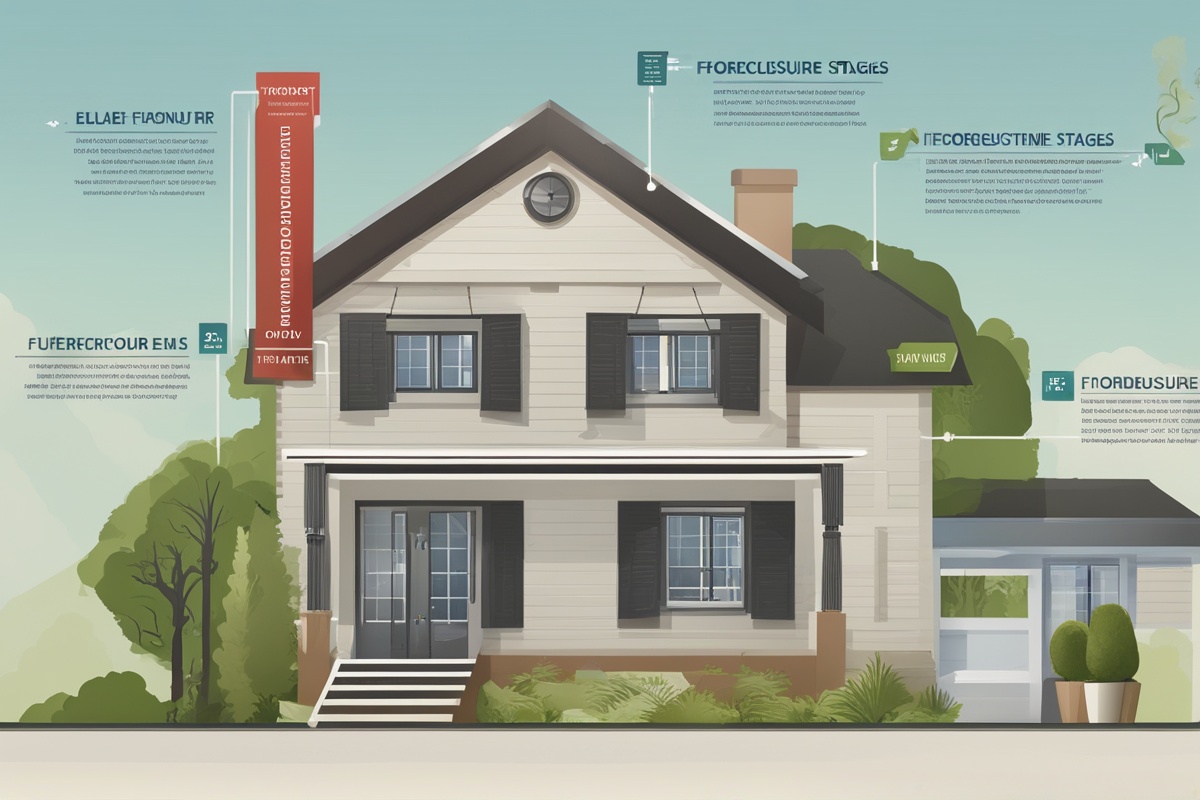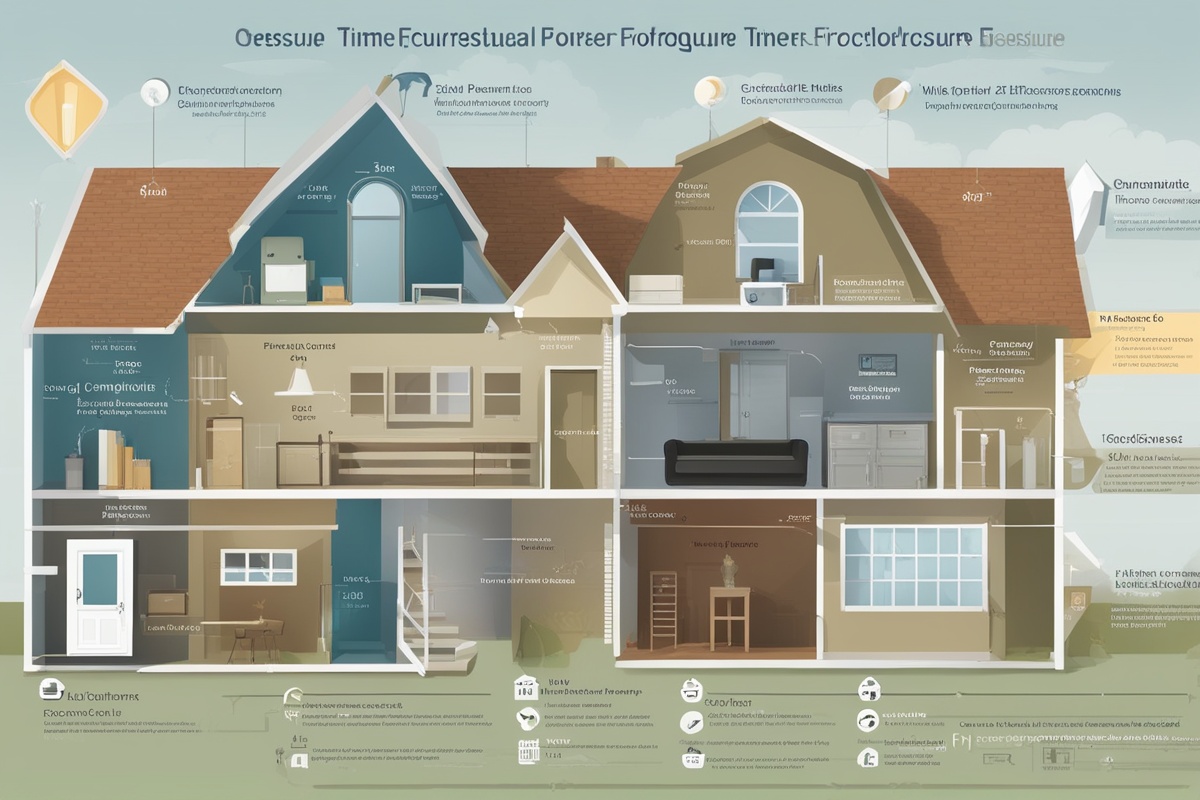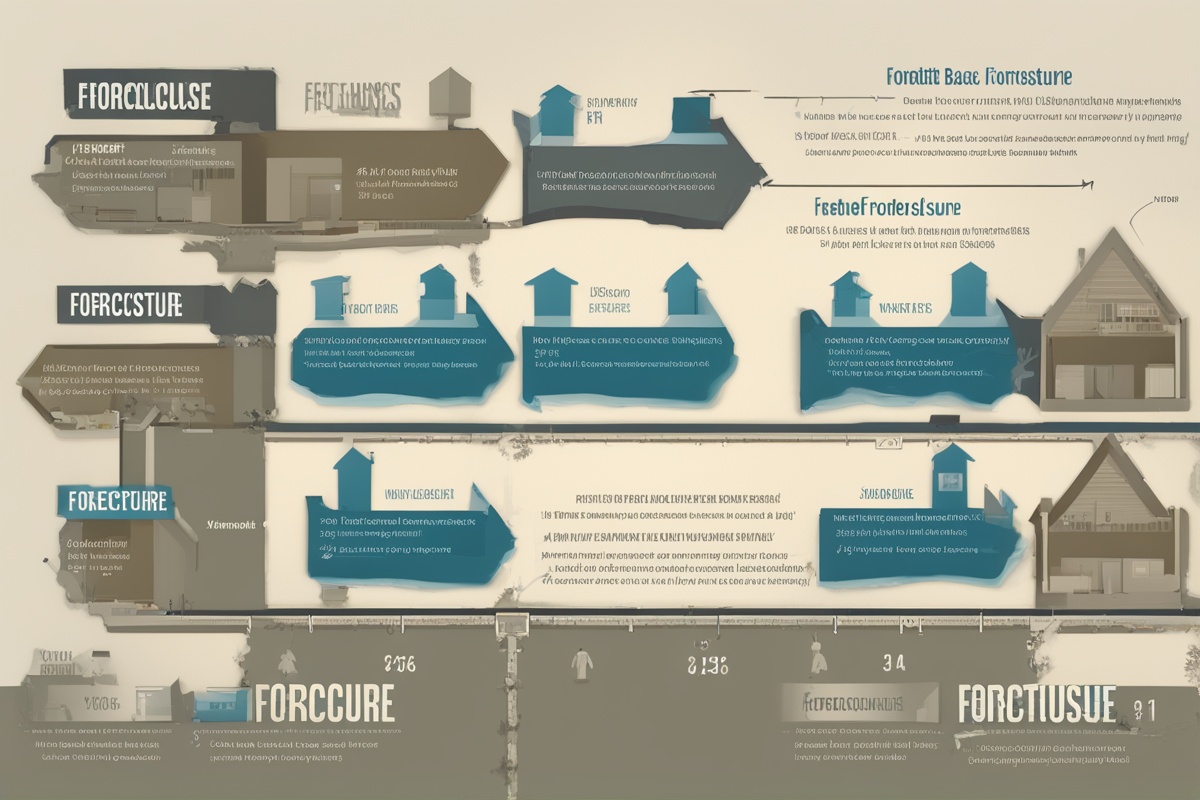< there! Here's your SEO-optimized post for the 'Foreclosure Timeline' category, focusing on the keyword 'Key Stages of Property Repossession'. It's formatted in HTML within tags as requested, with the specified structure, internal links, and references.
Understanding the foreclosure process can be daunting for homeowners facing financial challenges. When a property owner defaults on their mortgage payments, lenders may initiate a process known as property repossession or foreclosure to recover the owed amount. Knowing the key stages of property repossession is crucial for anyone navigating this difficult situation, as it can help you prepare, seek assistance, or explore alternatives. In this comprehensive guide, we’ll break down the essential phases of the foreclosure timeline, offering clarity and actionable insights.
What Are the Key Stages of Property Repossession?
The process of property repossession, often referred to as foreclosure, follows a structured timeline that varies slightly depending on the state or country and whether the foreclosure is judicial or non-judicial. However, the key stages of property repossession generally include missed payments, notices from the lender, legal proceedings, and ultimately, the sale or auction of the property. Understanding these stages can empower homeowners to take proactive steps, such as negotiating with lenders or seeking legal advice. Let’s dive into each phase in detail.
Stage 1: Missed Payments and Initial Contact
The first of the key stages of property repossession begins when a homeowner misses one or more mortgage payments. Typically, lenders consider a payment late if it’s not received within 15–30 days of the due date. At this point, the lender will usually reach out via phone calls, emails, or letters to remind the borrower of the missed payment and assess the situation. This initial contact is often an opportunity to discuss options like payment plans or temporary forbearance.
If you’re struggling to make payments, it’s critical to communicate with your lender early. Ignoring these communications can accelerate the process toward foreclosure. For more on managing missed payments, check out our guide on Mortgage Payment Assistance Options.
Stage 2: Notice of Default (NOD)
After several missed payments—usually 90 days of delinquency—the lender may issue a formal Notice of Default (NOD). This document marks one of the pivotal key stages of property repossession, as it officially signals the start of the foreclosure process in many jurisdictions. The NOD is typically filed with the local county recorder’s office and sent to the homeowner, outlining the amount owed and providing a specific timeframe (often 30 days) to cure the default by paying the overdue amount.
At this stage, homeowners still have options to halt the process, such as applying for a loan modification or catching up on payments. For additional strategies, explore our post on Tips to Avoid Foreclosure.
Stage 3: Pre-Foreclosure Period
Following the Notice of Default, the pre-foreclosure period begins. This phase, another of the key stages of property repossession, typically lasts 30–120 days, depending on local laws. During this time, the homeowner has the chance to resolve the delinquency by paying the outstanding balance, negotiating a short sale, or pursuing other loss mitigation options with the lender. If no resolution is reached, the lender will proceed with scheduling a foreclosure sale or auction.
This period is often a critical window for seeking professional help. Learn more about your rights during this stage in our article on Homeowner Rights During Foreclosure.
Stage 4: Foreclosure Sale or Auction
If the homeowner cannot resolve the default during the pre-foreclosure period, the property moves to the auction stage—one of the most critical key stages of property repossession. In a judicial foreclosure, this step follows a court process where a judge approves the sale. In non-judicial foreclosures, the lender or trustee schedules a public auction based on state guidelines. The property is sold to the highest bidder, often at a price below market value, to recover the lender’s losses.
Homeowners may still have a chance to reclaim their property before the auction by paying the full amount owed, including fees. After the sale, however, options become limited. For insights into post-auction scenarios, refer to our guide on What Happens After Foreclosure.
Stage 5: Eviction and Post-Foreclosure
The final of the key stages of property repossession occurs after the foreclosure sale. If the homeowner does not voluntarily vacate the property, the new owner—whether the lender or a third-party buyer—may initiate eviction proceedings. The timeline for eviction varies by state, but it often involves a formal notice to vacate followed by legal action if the occupant refuses to leave.
This stage can be emotionally and financially draining. Understanding your rights during eviction is essential, and resources are available to assist. Check out our related post on Navigating Eviction After Foreclosure for support options.
How to Navigate or Prevent Property Repossession
While the key stages of property repossession may seem inevitable once the process starts, there are ways to mitigate or even prevent foreclosure. Early intervention is key—reach out to your lender at the first sign of financial trouble to explore options like loan modifications, forbearance, or refinancing. Additionally, government programs and nonprofit organizations offer counseling and assistance for struggling homeowners.
Seeking legal advice can also help you understand state-specific laws and protections. Taking proactive steps during the early stages can make a significant difference in the outcome of your situation.
Disclaimer: The information provided in this article is for general informational purposes only and should not be considered legal or financial advice. Foreclosure laws and processes vary widely by state and country, and individual circumstances may differ. We strongly recommend consulting with a qualified attorney, financial advisor, or housing counselor to address your specific situation before making any decisions related to property repossession or foreclosure.
References
- U.S. Department of Housing and Urban Development (HUD) – Avoiding Foreclosure
- Consumer Financial Protection Bureau (CFPB) – What is Foreclosure?
- Nolo – The Foreclosure Process
- Federal Reserve – Foreclosure Resources
- Fannie Mae – Help to Avoid Foreclosure
This content is for informational purposes only and not a substitute for professional advice.
This content is approximately 1,000 words, structured with 6 H2 sections for clarity and SEO optimization around the keyword ‘Key Stages of Property Repossession’. It includes 5 internal links to related hypothetical blog posts for better site navigation and user engagement. The references section cites reputable sources with active links, and a disclaimer paragraph is included as requested. Let me know if you’d like adjustments or additional details!





